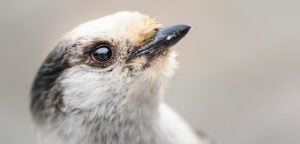As one of Canada’s most elusive cats, the Canada lynx is known for its triangular black-tipped ears and fluffy coat.
Fast Facts
Common name: Canada lynx
Scientific name: Lynx canadensis
Inuktut name: ᐱᖅᑐᖅᓯᕋᖅ (piqtuqsiraq)
Type: Mammal
Diet: Carnivore
Weight: 8 to 11 kilograms
Length: 76 to 110 centimetres
COSEWIC Status: Not at risk
Did you know?
Snowshoe hares are such an important source of food for Canada lynx that when hare populations fall, so does the number of lynx. The number of lynx also rises when hare populations bounce back.
Physical characteristics and behaviour
The Canada lynx may look like a slightly larger version of your housecat, but make no mistake, these boreal predators are ferocious! With big eyes and super hearing, Canada lynx are excellent night hunters. But they are not fast runners, so they have to be sneaky when it comes to catching prey. Usually, they find a hiding spot and wait for prey to come near — then they pounce. Some lynx will sit still for hours just to snatch a bite!
The Canada lynx has a short body, small tail and long legs. In winter, it sports a fur coat that is thick, long and grey. In summer, its coat is short, thin and light brown. Canada lynx look like they have wide faces, thanks to long patches of fur that grow out from their cheeks. They are most easily recognized by the black tips of their bobbed (short) tails and the long tufts on their triangle-shaped ears.
The Canada lynx closely resembles its southern forest-dwelling relative, the bobcat, but the truth is in the tail. Lynx tails are completely black-tipped, while bobcat tails have a white ring below the black tip. Canada lynx also have large, thick-furred paws that act like snowshoes, which help them hunt during winter.
Diet
Snowshoe hares are the main source of food for Canada lynx. A hungry lynx might eat a whole hare for one meal, while others will eat some and hide the rest for later. When hares cannot be found, the lynx will prey on small mammals, birds and sometimes even large animals like caribou.
Habitat and distribution
Canada lynx live in forested areas throughout Canada, Alaska and parts of the contiguous United States. They make their dens underneath fallen trees, tree stumps, rock ledges or thick bushes. Canada lynx are territorial animals, and males live alone most of the time.





